| Greta the "Soap-Girl" |
|
| Introduction |
In late 1919, Greta had her first real job in a local barber shop. She was working as a tvålflicka (a soap girl). A soap girl had to lather men's faces before they were shaved. Greta was very proud about her first job and took her work very serious. Her salary was seven kronor a week.
Due of the family's dire financial straits and her need to make more money than a barbershop job could provide, Greta decided to find a better job and soon filled out a an application for the PUB (Paul U. Bergström's department store) in Summer of 1920.
Greta in late 1919 |
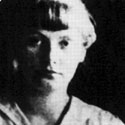
A Full-Time Job
|
In very early 1920, Anna Gustafsson wanted Greta to stay at home and take care of her father but the family needed every penny. Kalle was still ill and couldn't work. Her casual employment as a tvålflicka became a full-time job when she accepted an apprenticeship with a second barber, Einer Widebäcke, where the pay was four kronor a week (about one dollar) plus a like amount in tips. The third barber was Arthur Ekengren.
The Barber and the Barbershop |
Arthur Ekengren's shop on Götgatan 97 (Södermalm/Stockholm) was the largest and busiest in the neighbourhood; there Greta could make tips nearly equal to her salary of seven kronor a week.
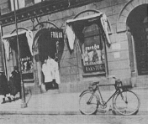
According to Sally Ekengren, the wife of Arthur Ekengren, Greta was an immediate favorite on Götgatan and attracted a number of regular customers. “The shop was always full in the evenings,” Ekengren noted. “Some clients would phone and make special appointments and then, if Greta was not there, find some excuse for postponing them.” Whether decorating her cubicle with theatrical postcards or joking with the customers, she “filled the place with her laughter and vitality.”
 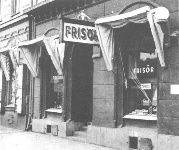
Greta the "Soap-girl" |
A soap girl had to lather men's faces before they were shaved. "Every day after dinner," she has said, " I went to my job and lathered up faces. While my employer shaved a customer, I lathered up the next man's stubble with fatty lathering soap." Her duties included mixing the lather (Greta started as a lather), laying out the razors, cleaning up after the barber – the usual unappetizing men's-hygiene chores of such establishments. That experience perhaps affected her general attitude toward the male sex, but by all accounts, she held her own: like most Söder girls she had a quick tongue and wielded a mean shaving brush when she had to.
A young woman in a working-class barbershop tended to mature fast, and this one was fairly mature to begin with. A good soap girl did more than simply put lather on her faces of students, sailors, and businessmen. She gently rubbed the soap into the skin, massaging each man's face and preparing him for the barber. It could be a enjoyable, even sensual experience for the patron and certainly put a teenage girl in the position of dealing with unwelcome advances along with the camaraderie. According to fellow assistant Märta Thörnland, Greta “always kept her dignity and never allowed men to get fresh with her.”
Greta's Confirmation |
While working as a "soap-girl" Greta was confirmed at a Sunday morning on April 18, 1920. It is not known if her father attended the confirmation. Greta in her white confirmation dress. The pictures reveal a slightly overweight teenage girl with uncharacteristic (for her) kewpie doll curls. She wept silently all throughout her first communion.
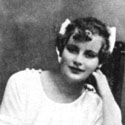 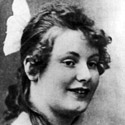
Tips & Chocolate |
Greta turned over her earings to her mother – but kept the tips to herself, often spending them on chocolate treats. A comparison of photographs taken between winter 1919 and fall 1920 reveals a startling change: The Greta Gustafsson of late 1920 is nearly unrecognizable behind chubby cheeks, a sagging chin, bloated eyelids, and shorter, permed hair. Suppressing her unhappiness, it was another way of hiding in plain sight.
 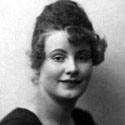
Greta's father died |
One day, Greta came home from work and found her father burning with fever. Karl Alfred who struggeled with illness since late 1919, complained of pain and was so ill he couldn't even stand up. She brought him to the hospital but it was too late. Some time later Greta's father died of “nefrit chronicus”.
This is a chronic inflammation of the kidneys. Kalle was buried in a simple plot at Södra Skogskyrogåarden. For a time after his death Greta get up in the night and run to his grave to see that he had not been buried alive. Her father's death changed many things for 14 old Greta.
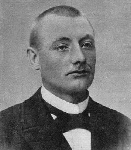 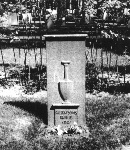 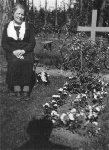
Palmolive Soap |
When Greta was in Hollywood, MGM and its publicity department proposed Garbo (early 1927) that she allow her face to appear on the Palmolive soap wrapper and, thus, on the bathroom sinks of America. "I don't understand English very well," she replied innocently. "Wouldn't good movies be enough?"
The studio thought not, and failed to grasp that Garbo's aversion was not just to advertising schemes but to all forms of personal publicity. In late 1970 Garbo told a friend: "After all, I had never used Palmolive. I have always used lavender soap."
The Barbershop today |
The Barbershop were Greta worked is located in Götgatan 97 (Södermalm/Stockholm)
but today it is a fashion shop called "Cayenne".
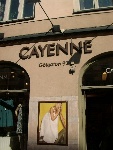
|
| |
| |
Sources
Barry Paris - Garbo
Karen Swenson - Garbo: A life Apart |
| |
| |